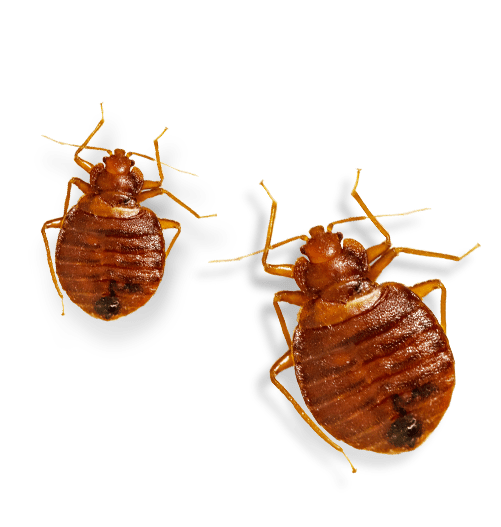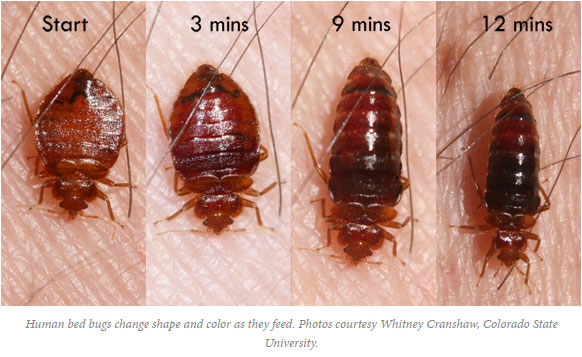How to Identify Bed Bug Bites and Prevent Future Infestations
How to Identify Bed Bug Bites and Prevent Future Infestations
Blog Article
Get Educated About the Sorts Of Bug Control Techniques and Their Benefits for Homeowners
Comprehending the different insect control techniques offered to home owners is necessary for reliable bug monitoring. From chemical and biological methods to mechanical and cultural techniques, each method presents special benefits that can considerably affect both health and environmental safety. Home owners that are educated can make strategic options that not only address pest concerns but also improve the overall high quality of their living setting. As we discover these approaches further, it ends up being clear that the decision-making procedure entails more than simply immediate results; it touches on lasting sustainability and health. What variables should affect these important choices?
Chemical Bug Control Approaches
Chemical bug control techniques are a critical part of integrated insect management techniques for property owners seeking reliable options to pest infestations. These methods involve the application of chemical substances created to get rid of or hinder pests that endanger personal effects, health, and convenience. Usual chemicals used include insecticides, rodenticides, herbicides, and fungicides, each tailored to target particular pests.
The primary benefit of chemical pest control is its fast effectiveness; lots of formulas supply prompt outcomes, reducing pest populations significantly quickly. Furthermore, advancements in chemical solutions have resulted in items that are more ecologically friendly and have reduced toxicity degrees for non-target organisms when applied correctly.

Biological Bug Control Methods
All-natural insect control techniques have gained prominence as house owners seek more secure and more sustainable options to conventional chemical strategies. Biological insect control techniques make use of natural killers, bloodsuckers, or pathogens to manage parasite populations successfully. This method is not just eco-friendly yet likewise lessens the danger of damage to non-target species, consisting of useful bugs and wild animals.
Among one of the most common biological control techniques entails presenting natural predators into the atmosphere. Ladybugs can be made use of to manage aphid populaces, while nematodes target soil-dwelling parasites like grubs. Furthermore, parasitoids-- organisms that live on or within a host-- can be utilized to manage certain bug species by laying eggs inside them, ultimately resulting in their death.
Another technique is the use of biopesticides, which are stemmed from all-natural materials such as minerals, microorganisms, or plants (bed bug exterminator). These products can efficiently target parasites while posing minimal risk to animals and human beings. In general, organic insect control techniques provide home owners with a reliable ways of bug management that aligns with eco-friendly concepts, promoting a much healthier living environment while reducing reliance on synthetic chemicals
Mechanical Parasite Control Techniques
Mechanical bug control strategies include a variety of approaches that physically protect against or remove parasites without the usage of chemicals. These strategies are especially useful for house owners seeking eco-friendly alternatives while ensuring the security of their living rooms.
One typical technique is using obstacles, such as webs, displays, and catches, which stop pests from going into homes or certain areas. As an example, setting up home window displays can successfully maintain insects out, while making use of physical barriers around yards can discourage bigger bugs like bunnies or deer. Additionally, mechanical traps designed for rodents can catch and eliminate these parasites without the need for poisonous materials.
One more reliable method involves the usage of vacuums and brooms to eliminate pests straight from surface areas. Routine cleaning and upkeep can substantially lower insect populations by eliminating food resources and concealing areas. Furthermore, using gadgets like ultrasonic parasite repellents can prevent different pests through sound waves that are unpleasant to them yet faint to people.
Cultural Bug Control Practices
Social pest control methods concentrate on customizing the environment and administration strategies to develop problems that are less for pest infestations. These practices are essential in keeping a well balanced community and decreasing the dependence on chemical interventions. By altering farming practices, home owners can successfully discourage parasites while promoting plant health.
One typical method consists of crop turning, which disrupts the life process of insects by transforming the types of plants expanded in a particular location (bed bug exterminator). This not only decreases pest populations however also enhances dirt health. In addition, intercropping-- planting diverse plants in proximity-- can perplex pests and minimize their ability to find their preferred host plants
Water administration is an additional important aspect of cultural techniques. Proper irrigation strategies can avoid standing water, which works as a breeding place for insects and other parasites. Preserving sanitation in and around the home, such as frequently getting rid of particles and food waste, can considerably minimize pest tourist attraction.
Including these social techniques right into a comprehensive pest management technique enables house owners to develop a setting that normally hinders parasites, thereby enhancing the effectiveness of other control techniques while advertising lasting gardening and landscaping.

Integrated Bug Management Approaches
Integrated Pest Monitoring (IPM) stands for a holistic approach that incorporates different strategies to effectively take care of insect populaces while lessening environmental influence. This approach incorporates biological, social, physical, and chemical practices to attain sustainable parasite control. By examining pest populations and their natural adversaries, IPM highlights surveillance and determining parasites before applying control steps.
Among the core principles of IPM is the usage of thresholds, which develop the degree of insect task that requires treatment. This ensures that therapies are used only when needed, reducing the dependence on chemical pesticides. Biological control techniques, hop over to here such as introducing all-natural killers or bloodsuckers, operate in combination with cultural methods like crop rotation and environment manipulation to interfere with pest life cycles.
Moreover, IPM encourages making use of least-toxic chemical options when intervention is necessary, prioritizing items that pose minimal threat to non-target microorganisms and the environment. For homeowners, embracing IPM approaches not only boosts the efficiency of bug administration however also advertises a healthier living environment, cultivating biodiversity and reducing chemical direct exposure. Inevitably, IPM equips property owners to make informed decisions that stabilize parasite control with ecological responsibility.
Verdict
In verdict, recognizing the different insect control methods empowers home owners to make enlightened decisions concerning pest management. Each approach-- chemical, organic, mechanical, cultural, and integrated parasite administration-- provides distinct advantages that accommodate different demands and preferences. By commercial exterminator picking proper techniques, homeowners can properly handle insect populaces while reducing health threats and environmental influences. This educated approach adds to a healthier living atmosphere, promoting general well-being for family members and animals alike.
Comprehending the numerous insect control approaches available to property owners is crucial for effective bug monitoring.Chemical pest control techniques are a critical element of incorporated parasite management techniques for house owners looking for reliable solutions to pest invasions. Generally, organic parasite control techniques offer house owners with a reliable methods of parasite management that aligns with environmental check this site out principles, advertising a much healthier living setting while lowering dependence on artificial chemicals.
Cultural pest control practices focus on modifying the atmosphere and administration strategies to develop conditions that are less conducive to pest infestations.In conclusion, understanding the different bug control approaches encourages home owners to make enlightened choices regarding pest management.
Report this page